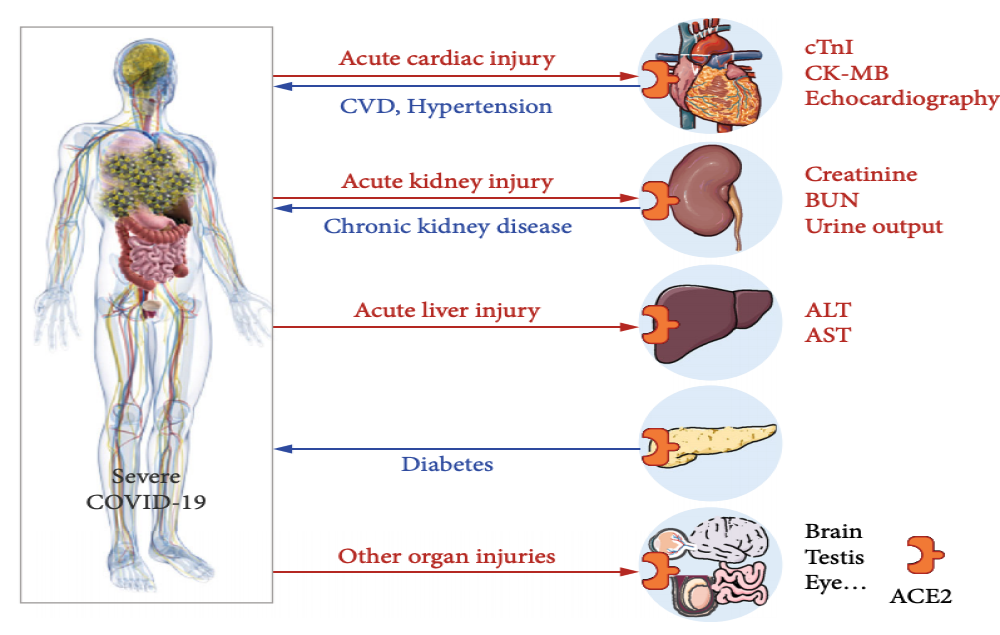Authors: COVID-19 pathophysiology: A review Koichi Yuki,⁎ Miho Fujiogi, and Sophia Koutsogiannaki
Abstract
In December 2019, a novel coronavirus, now named as SARS-CoV-2, caused a series of acute atypical respiratory diseases in Wuhan, Hubei Province, China. The disease caused by this virus was termed COVID-19. The virus is transmittable between humans and has caused pandemic worldwide. The number of death tolls continues to rise and a large number of countries have been forced to do social distancing and lockdown. Lack of targeted therapy continues to be a problem. Epidemiological studies showed that elder patients were more susceptible to severe diseases, while children tend to have milder symptoms. Here we reviewed the current knowledge about this disease and considered the potential explanation of the different symptomatology between children and adults.
1. Introduction
In December 2019, a series of acute atypical respiratory disease occurred in Wuhan, China. This rapidly spread from Wuhan to other areas. It was soon discovered that a novel coronavirus was responsible. The novel coronavirus was named as the severe acute respiratory syndrome coronavirus-2 (SARS-CoV-2, 2019-nCoV) due to its high homology (~80%) to SARS-CoV, which caused acute respiratory distress syndrome (ARDS) and high mortality during 2002–2003 [1]. The outbreak of SARS-CoV-2 was considered to have originally started via a zoonotic transmission associated with the seafood market in Wuhan, China. Later it was recognized that human to human transmission played a major role in the subsequent outbreak [2]. The disease caused by this virus was called Coronavirus disease 19 (COVID-19) and a pandemic was declared by the World Health Organization (WHO). COVID-19 has been impacting a large number of people worldwide, being reported in approximately 200 countries and territories [3,4]. As of April 7th, 2020, around 1,400,000 cases worldwide have been reported according to the Center for Systems Science and Engineering (CSSE) at John Hopkins University [5].
SARS-CoV-2 virus primarily affects the respiratory system, although other organ systems are also involved. Lower respiratory tract infection related symptoms including fever, dry cough and dyspnea were reported in the initial case series from Wuhan, China [6]. In addition, headache, dizziness, generalized weakness, vomiting and diarrhea were observed [7]. It is now widely recognized that respiratory symptoms of COVID-19 are extremely heterogeneous, ranging from minimal symptoms to significant hypoxia with ARDS. In the report from Wuhan mentioned above, the time between the onset of symptoms and the development of ARDS was as short as 9 days, suggesting that the respiratory symptoms could progress rapidly [6]. This disease could be also fatal. A growing number of patients with severe diseases have continued to succumb worldwide. Epidemiological studies have shown that mortalities are higher in elder population [8] and the incidence is much lower in children [9,10]. Current medical management is largely supportive with no targeted therapy available. Several drugs including lopinavir-ritonavir, remdesivir, hydroxychloroquine, and azithromycin have been tested in clinical trials [8,11,12], but none of them have been proven to be a definite therapy yet. More therapies are being tested in clinical trials. A large number of countries have implemented social distancing and lockdown to mitigate further spread of the virus. Here we will review our current knowledge of COVID-19 and consider the underlying mechanism to explain the heterogeneous symptomatology, particularly focusing on the difference between children and adult patients.
For More Information: https://www.ncbi.nlm.nih.gov/pmc/articles/PMC7169933/
